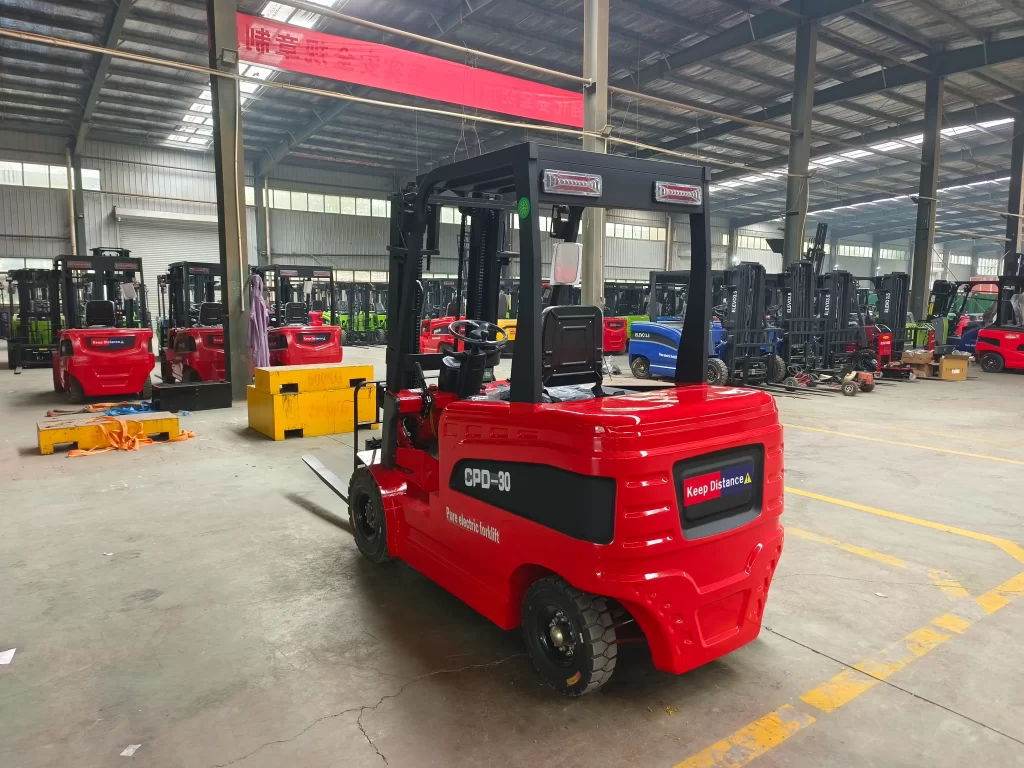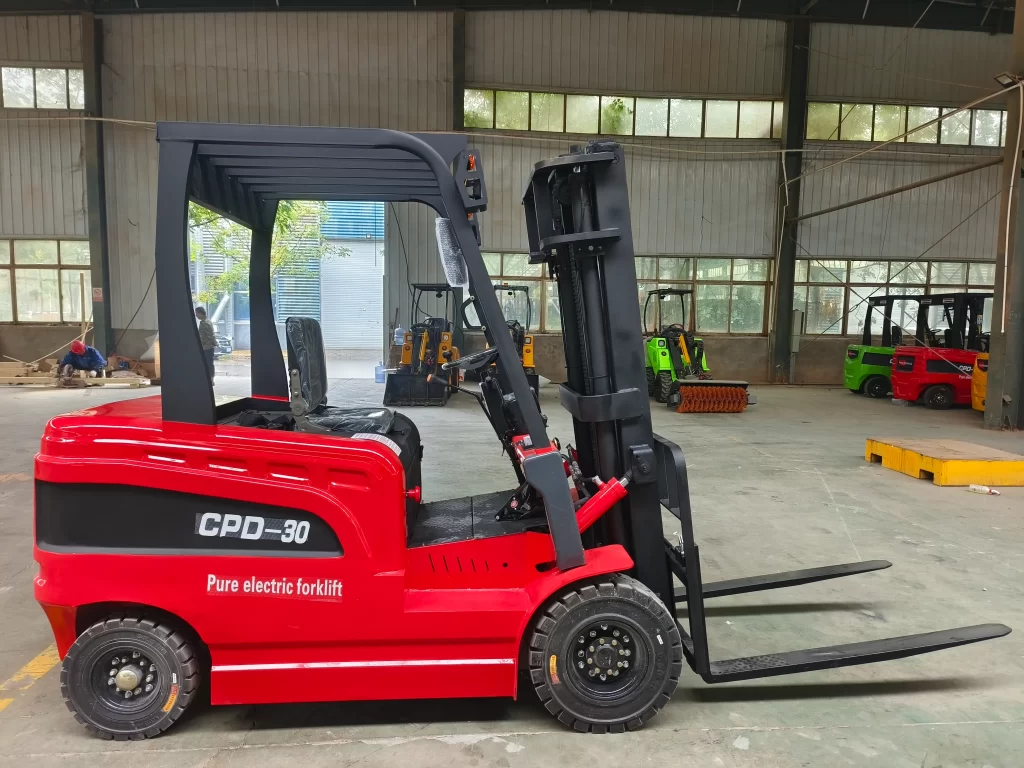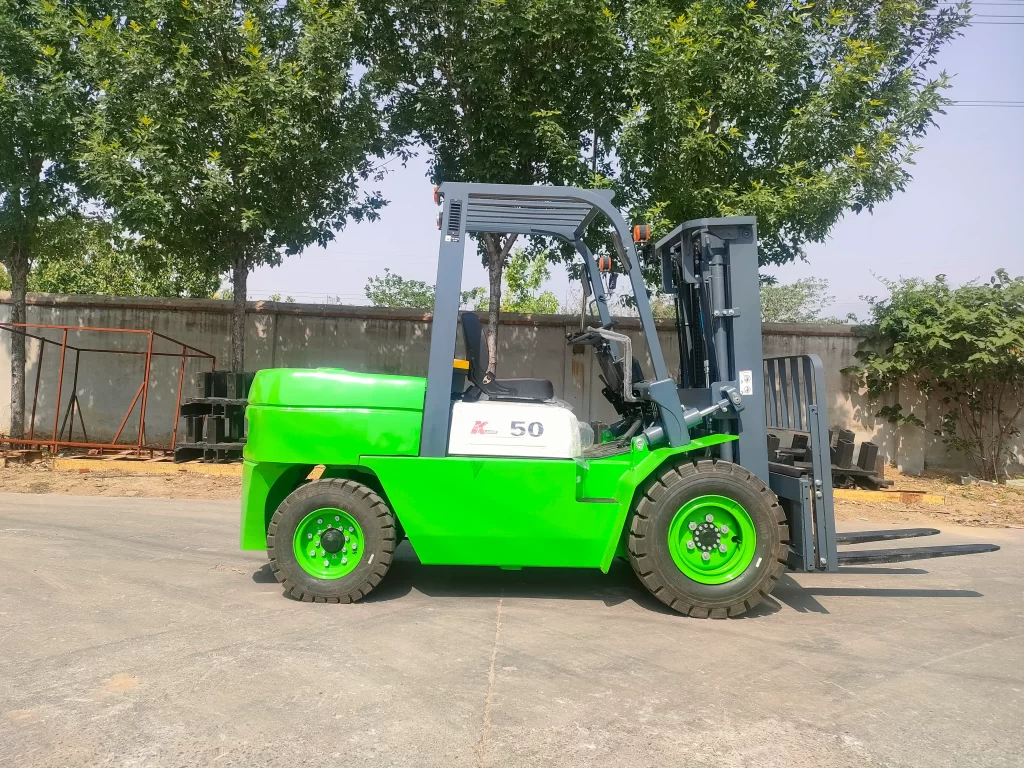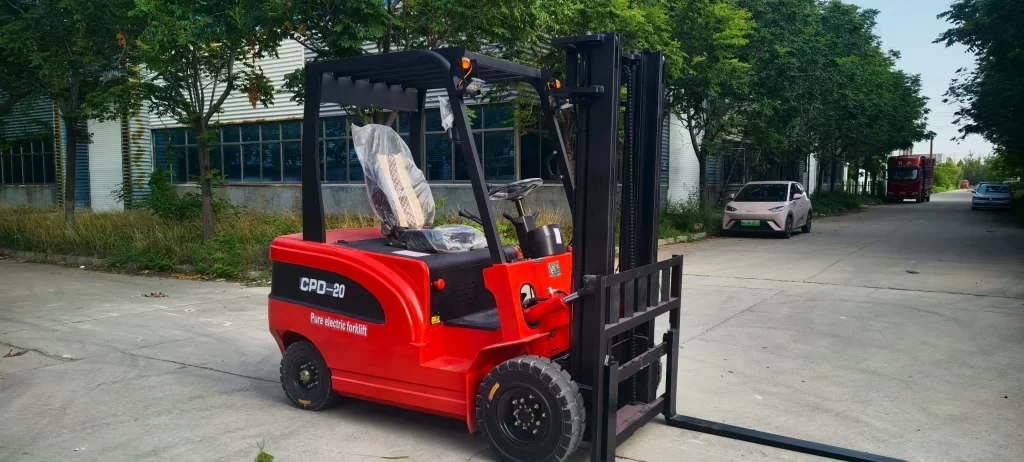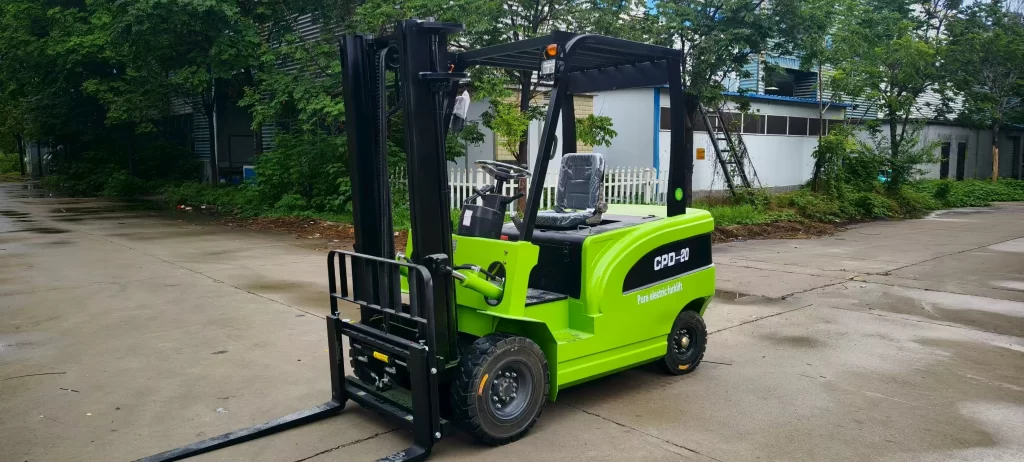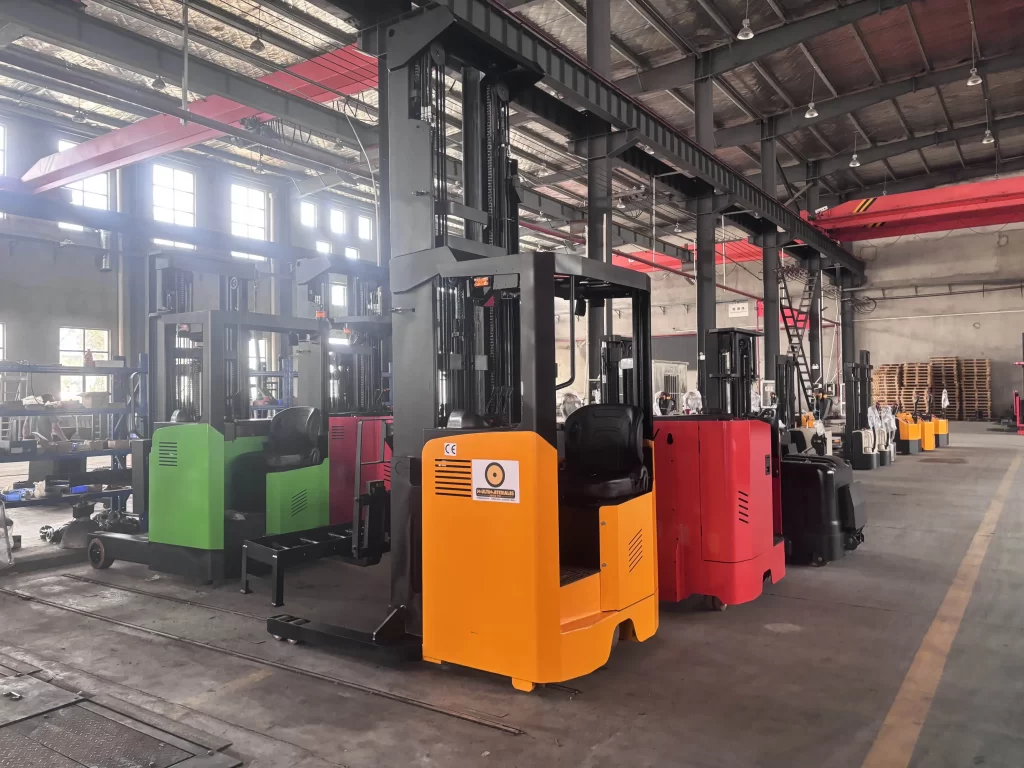Which is better: LPG or electric forklift?
As we all know, electric forklifts are a type of new energy forklift characterized by low pollution and low noise. Meanwhile, LPG forklifts also utilize clean energy. What are the differences between the two? Which type of forklift is better? This is a question worth exploring.

What is an LPG Forklift?
An LPG forklift uses liquefied petroleum gas (LPG) as fuel, offering lower emissions and good fuel efficiency suitable for both indoor and outdoor operations.
LPG forklifts burn cleaner than diesel or gasoline, reducing emissions. Their fuel efficiency stems from high energy density and optimized combustion, thereby lowering operating costs. Compared to diesel alternatives, LPG forklift engines also require less maintenance, making them both environmentally friendly and cost-effective for industries prioritizing sustainability.



Features
Environmental Performance: LPG forklifts emit significantly lower levels of nitrogen oxides and hydrocarbons than diesel forklifts. This low-emission characteristic enables indoor operation while maintaining robust engine performance, bridging the environmental gap between diesel and electric forklifts. As an upgrade from diesel forklifts, LPG models bridge the power gap between diesel and the cleanliness of electric. With the rise of bio-LPG forklifts, they become a strategic choice for companies balancing productivity and sustainability.
- Fuel Efficiency: LPG primarily consists of propane (C3H8) and butane (C4H10), with some blends containing propylene (C3H6) and butylene (C4H8). It is typically derived from petroleum gas in oil and gas fields, refineries, or ethylene plants. Compared to other fuels, LPG offers distinct advantages:
- Low Pollution:LPG is a hydrocarbon composed of C3 (carbon three) and C4 (carbon four) compounds that burn completely without producing dust. Its use in modern cities significantly reduces pollution previously caused by coal and wood fuels.
- High Calorific Value:LPG has twice the calorific value per unit weight of coal, with a liquid calorific value ranging from 45,185 to 45,980 kJ/kg.
- Easy Transportation:LPG exists as a gas at standard temperature and pressure. It can be liquefied under pressure or by cooling to specific temperatures, enabling efficient transport via rail tank cars, road tankers, or LPG carriers on land and water.
- Stable Pressure:LPG’s high calorific value, smoke-free combustion, and absence of carbon residue make it a convenient and popular energy solution for internal combustion forklifts. Its high energy density also offers fuel consumption advantages, reducing operational costs. LPG forklifts represent efficient and clean heavy-duty industrial handling vehicles.
- Low Maintenance Costs: Compared to diesel engines, propane-fueled LPG engines produce significantly less carbon buildup, resulting in reduced maintenance requirements and lower long-term operational expenses.
- Operational Flexibility: LPG forklifts refuel rapidly (typically within 3-5 minutes), offering a much shorter refueling time than electric forklifts. This makes them ideal for environments requiring frequent operations. Electric forklifts require extended charging times. Lead-acid batteries lack fast-charging capabilities, with charging duration proportional to battery capacity—typically requiring over 6 hours during non-working hours. Lithium-ion batteries necessitate high-voltage industrial power (e.g., 380V) to achieve rapid charging.
LPG Forklift Prices
LPG forklift prices range from around $10,000 to several hundred thousand dollars.
LPG forklifts are modified from diesel models, so their prices correlate with high-quality diesel forklifts. The cost of the LPG engine also constitutes a significant portion of the total forklift price. In fact, a high-quality engine can cost as much as the entire vehicle itself, and engines meeting EPA and European emission standards command premium prices.
Diesel forklifts can support dual-fuel operation, such as LPG and gasoline, thereby balancing load capacity and emission standards.
What is an electric forklift?
An electric forklift is a vehicle powered by electricity, typically using a battery as its energy source and storage unit. This battery powers the drive motor, which in turn drives the hydraulic system to enable movement and material handling operations. The working principle involves converting electrical energy into mechanical energy via the motor. Key components include the battery, electric motor, and control system.
Electric forklifts are widely used across industries including food processing, manufacturing, transportation, warehousing, postal services, and retail. They offer advantages such as environmental friendliness and low noise levels. Suitable for fire- and explosion-proof environments, they enable unitized transport when paired with pallets or cargo containers. Their low pollution, quiet operation, and high degree of automation make them the preferred choice for warehouse logistics and indoor forklift applications.
Chassis
The chassis forms the primary structural body of the forklift, typically constructed from steel plates exceeding 5mm in thickness. Its design features a beamless structure with high structural integrity, enabling it to withstand heavy loads. Regarding battery placement within the chassis, two distinct manufacturing techniques exist: positioning the battery between the front and rear axles, or mounting it atop the rear axle. These two approaches represent optimal design choices for forklifts, each with distinct advantages and disadvantages. While offering excellent stability, the front-rear axle placement reduces usable space within the chassis, limiting battery capacity. This limitation is less critical for forklifts with a load capacity not exceeding 3 tons. However, it becomes significant for heavy-duty forklifts operating in complex environments requiring high battery capacity over an 8-hour work shift.
Forklift Mast: most of our electric forklifts now feature wide-view masts with lifting cylinders positioned on both sides. An additional center cylinder can be added to enhance lifting capacity and enable free lift functionality. Masts are typically available in two-section or three-section configurations.
Drive System: the drive system is a critical component of electric forklifts. Significant structural variations exist among different forklift models, including differences in single-motor configurations. Dual-motor drive systems deliver superior acceleration, hill-climbing performance, and traction. The adoption of electronic speed control systems, replacing traditional mechanical differential systems, has greatly enhanced operational reliability.
Hydraulic System: electric forklifts generally employ a dedicated motor driving a gear pump to supply hydraulic power for mast operations like lifting and tilting. As a forklift manufacturer with 16 years of production experience, our electric forklifts offer the following advantages: – Reinforced cylinders on the three-stage mast ensure smoother operation and silkier lifting. – An enlarged, dedicated hydraulic oil tank guarantees stable hydraulic fluid output.
Forklift Batteries: the battery is a critical component of electric forklifts. Forklift batteries can be categorized into lithium batteries and lead-acid batteries. Our lithium batteries utilize lithium iron phosphate technology, operating within a temperature range of -20°C to 70°C, making them suitable for most regional climates. We also support customization for fast chargers.
Pricing of Electric Forklifts
Electric forklifts range in price from $3,000 to over $100,000 USD, with smaller-tonnage models typically costing around several thousand dollars.
The primary cost components are the battery and motor, with the battery accounting for a significant portion of the total price. Thus, the battery serves as the lifeblood of electric material handling equipment, playing a crucial role in determining range, lifespan, and safety.
Future Development Trends
With technological advancements, electric forklifts will progressively become intelligent, incorporating features like autonomous driving, smart obstacle avoidance, and remote control to further enhance handling efficiency and safety.
Thanks to their eco-friendly and high-efficiency characteristics, electric forklifts are gradually replacing traditional internal combustion forklifts, becoming essential tools in modern logistics and warehousing operations.
Comparison: LPG Forklift vs. Electric Forklift
| Item | LPG Forklift | Electric Forklift |
| Power Source | LPG, environmentally friendly | Electricity, more eco-friendly and energy-saving |
| Main Components | Engine, hydraulic system, chassis | Motor, hydraulic system, battery, chassis |
| Price Range | $10,000 – >$100,000 USD | Lower, $3,000 – >$100,000 USD |
| Key Advantages | Eco-friendly, strong power (similar to engine forklifts) | Intelligent control, smooth operation |
| Endurance | Up to 24 hours/day, quick refueling | ~8 hours (battery-dependent), longer charging time |
| Working Environment | Indoor & Outdoor | Indoor & Outdoor |
| Operation Mode | Mechanical gear & hydraulic automatic transmission | Electro-hydraulic transm |
I
Summary
Electric counterbalance forklifts are material handling vehicles powered by direct current (battery). Overall, electric forklifts have significantly improved durability, reliability, and adaptability, fully capable of competing with internal combustion engine forklifts.
LPG forklifts represent an upgrade from diesel models. Bridging the gap between diesel power and electric cleanliness, they serve as green-energy industrial vehicles.
We are professional forklift manufacturer and we can provide customized diesel forlifts, LPG forklifts and electric forklifts for our customers.
FAQ
What maintenance practices extend LPG forklift lifespan?
Regularly inspect spark plugs, air filters, and fuel lines for wear. Clean fuel injectors every 500 hours to prevent clogging. Use high-quality LPG to avoid contaminants. Check fuel tank valves monthly for leaks. Unlike diesel, LPG leaves no carbon residue, reducing engine wear and extending maintenance intervals by 15-20%.
How to maintain electric forklifts?
Battery maintenance is straightforward: charge and discharge batteries promptly when forklifts are idle for extended periods to prevent damage; unplug immediately after full charge; ensure regular replacement of hydraulic oil filters.
Can electric forklift batteries be removed for charging?
Yes, lithium batteries are integrated units that can be removed from the vehicle for charging. Avoid pressing buttons on the battery casing to prevent malfunctions.
